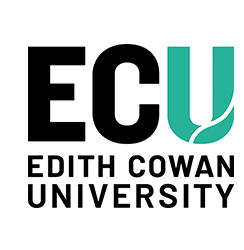Author Identifier (ORCID)
Robert A. Davis: https://orcid.org/0000-0002-9062-5754
Abstract
Vertebrate pollination has evolved in many plant lineages, with pollination by birds the most prevalent strategy. However, in Banksia (Proteaceae) many species are visited by a combination of nectarivorous birds, non-flying mammals (NFMs), and insects, though the relative importance of these pollen vectors for reproduction remains poorly understood. Here, we investigate the contribution to fruit set of birds, NFMs, and insects in Banksia catoglypta—a heathland shrub from south-west Australia. This species flowers in winter and produces large, golden-yellow inflorescences that are typically presented near the ground and consist of rigid, strongly scented flowers with a long stigma-nectary distance—suggesting pollination by vertebrates. The primary floral visitors were white-cheeked honeyeaters (Phylidonyris niger), honey possums (Tarsipes rostratus), house mice (Mus musculus), and introduced European honeybees (Apis mellifera), all of which carried B. catoglypta pollen. Banksia catoglypta was found to be obligately outcrossing with no evidence of pollen limitation. Selective exclusion of flying pollinators revealed that inflorescences pollinated solely by NFMs produced 50% fewer fruit than open-pollinated controls. Therefore, while mammals are pollinators of B. catoglypta, they may contribute comparatively little to fruit set in some Banksia species displaying floral traits considered adaptations to NFM pollination. Exclusion of vertebrate pollinators had no effect on fruit set, demonstrating that European honeybees can be effective pollinators of some primarily vertebrate-pollinated plants.
Document Type
Journal Article
Date of Publication
11-1-2024
Volume
206
Issue
3
Publication Title
Botanical Journal of the Linnean Society
Publisher
Oxford Academic
School
School of Science
RAS ID
70465
Funders
Holsworth Wildlife Research Endowment – Equity Trustees Charitable Foundation / Ecological Society of Australia
Creative Commons License

This work is licensed under a Creative Commons Attribution 4.0 License.
First Page
257
Last Page
273


Comments
Wawrzyczek, S. K., Davis, R. A., Krauss, S. L., Hoebee, S. E., Ashton, L. M., & Phillips, R. D. (2024). Pollination by birds, non-flying mammals, and European honeybees in a heathland shrub, Banksia catoglypta (Proteaceae). Botanical Journal of the Linnean Society, 206(3), 257-273. https://doi.org/10.1093/botlinnean/boae024